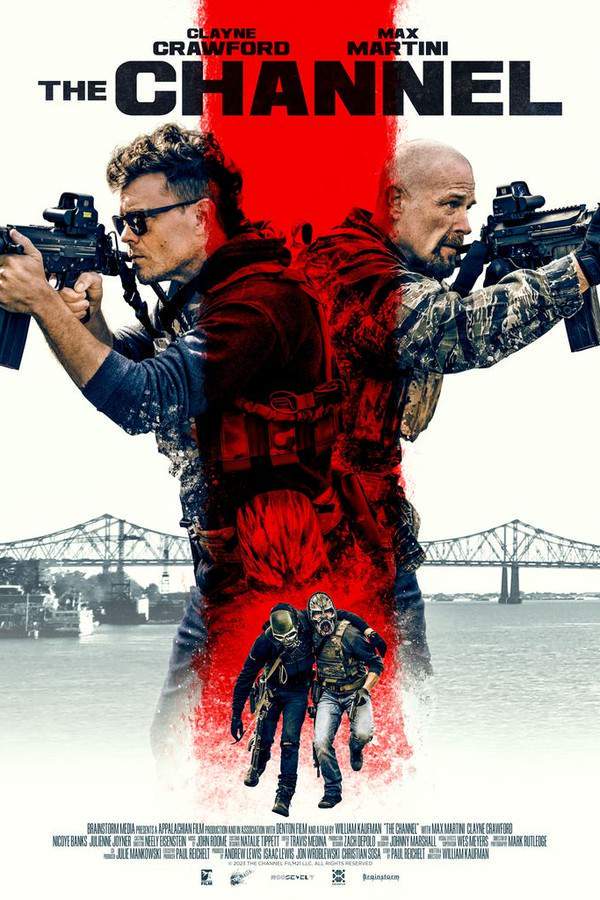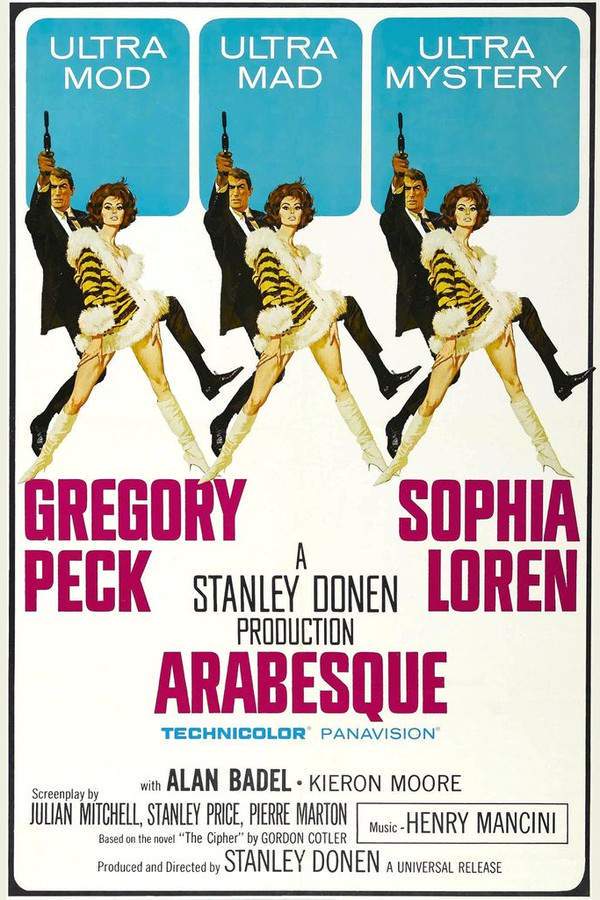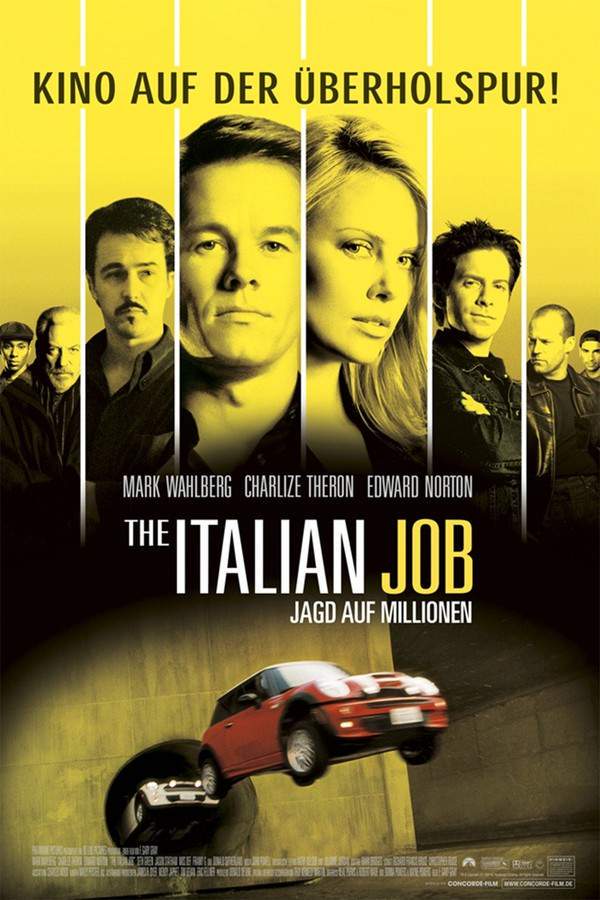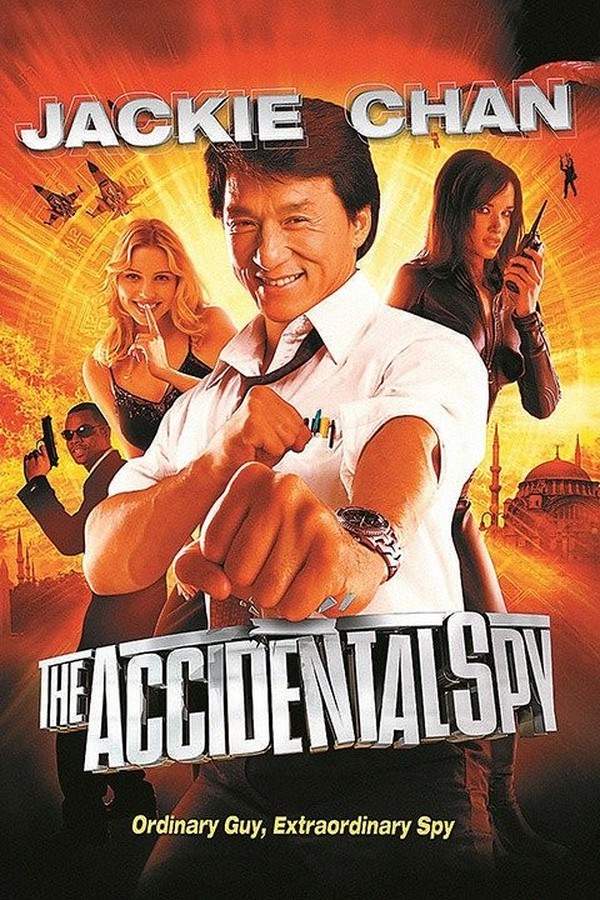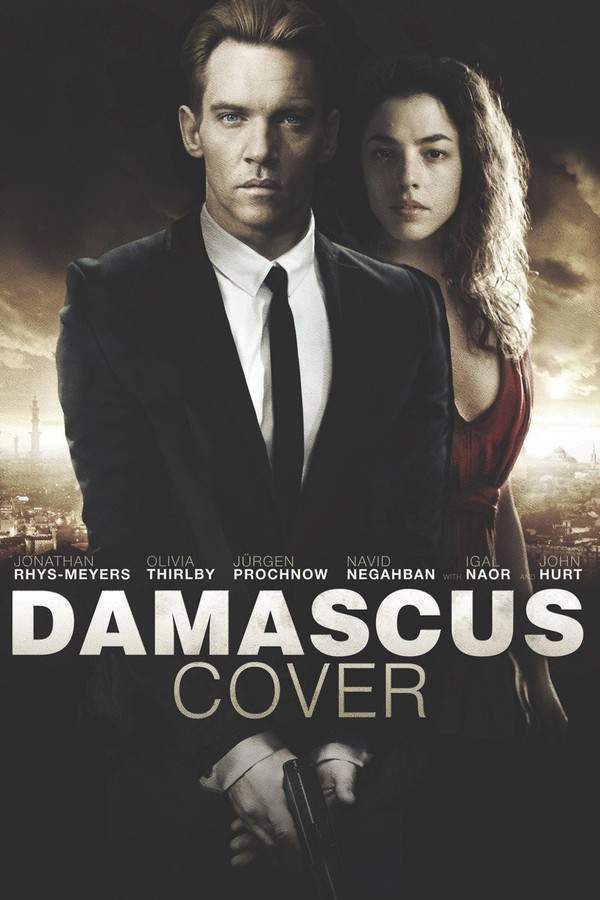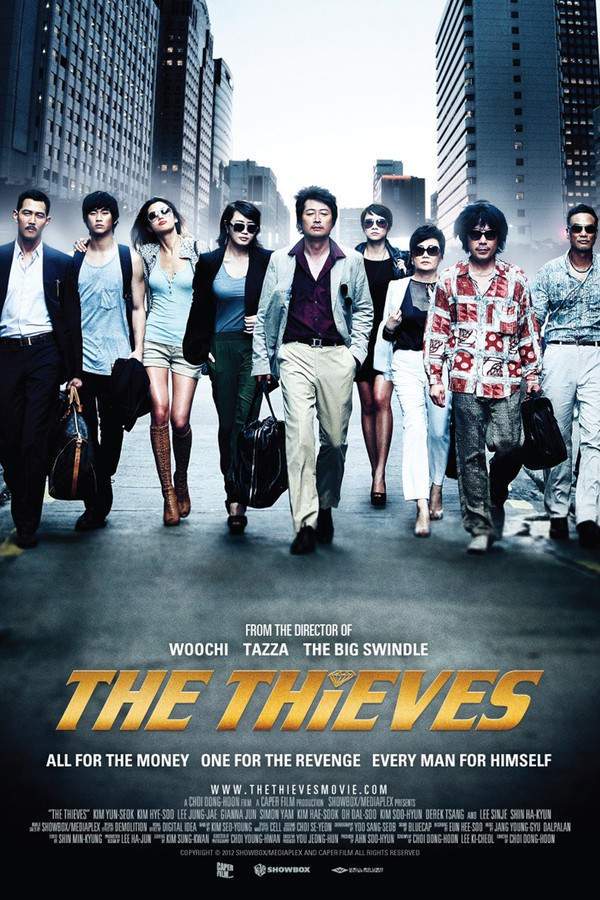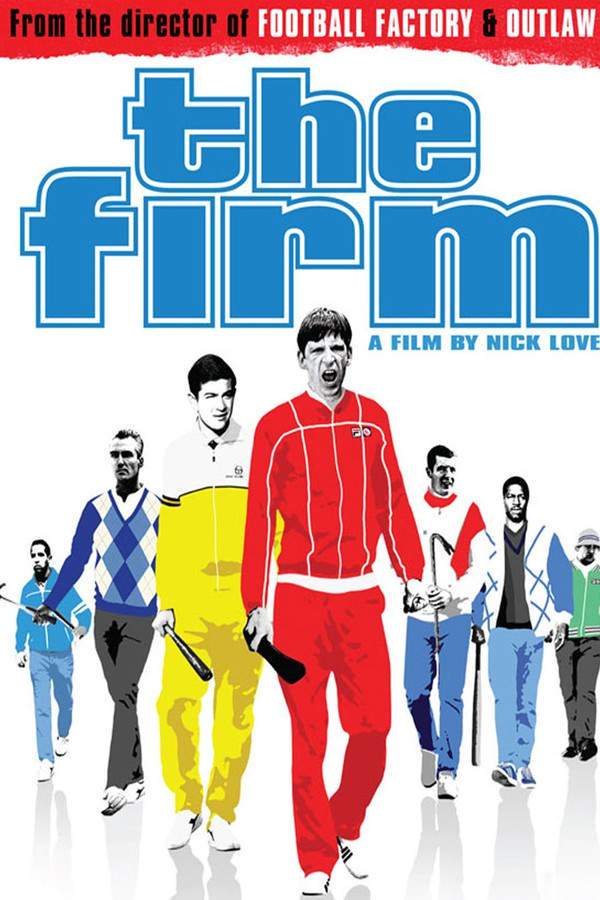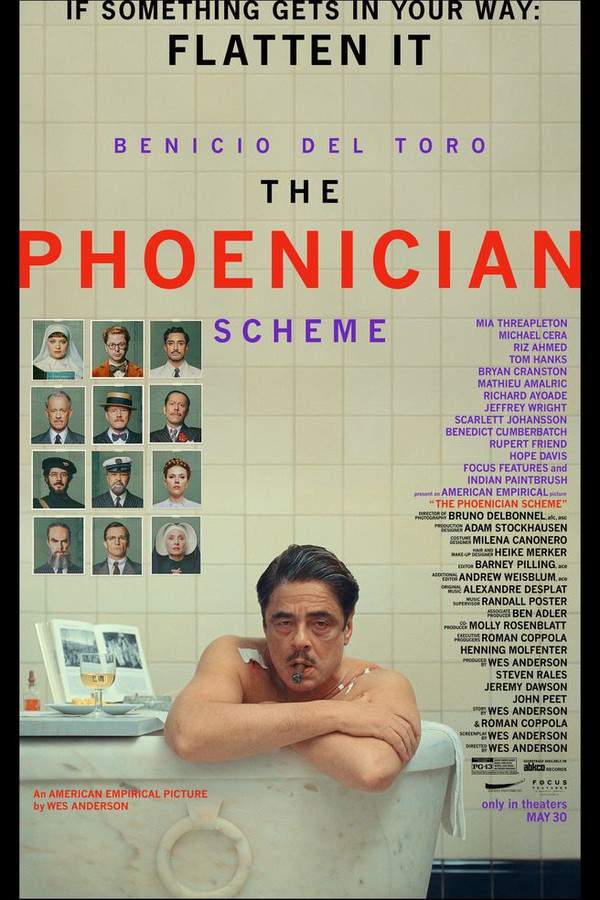
The Phoenician Scheme 2025
Directed by
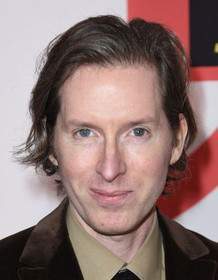
Wes Anderson
Made by
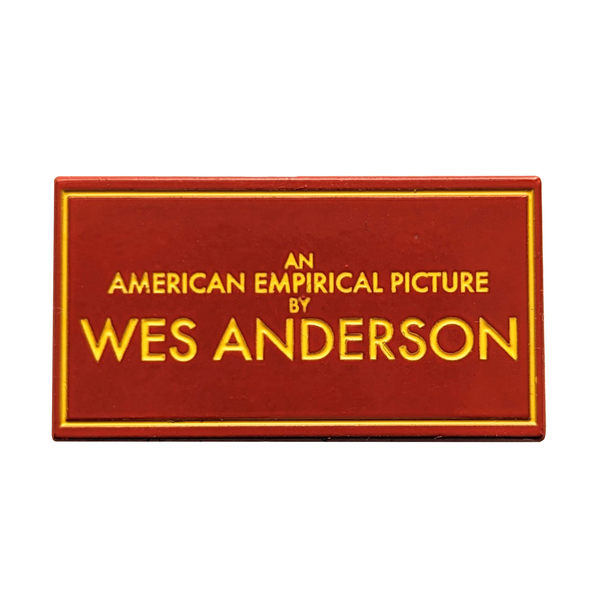
American Empirical Pictures
The Phoenician Scheme Plot Summary
Read the complete plot summary and ending explained for The Phoenician Scheme (2025). From turning points to emotional moments, uncover what really happened and why it matters.
Somewhere above the High Balkan Flatlands in 1950, arms dealer Anatole Zsa-Zsa Korda, played by Benicio Del Toro, finds himself in a precarious situation. While aboard his private plane, disaster strikes when a bomb unexpectedly kills his assistant, leading to a dramatic hole opening in the aircraft. After a heated argument with the pilot, The Pilot (played by Steve Park), Zsa-Zsa makes a quick decision to eject him and crash-land the plane into a nearby cornfield. Initially thought to be dead, Zsa-Zsa is soon revealed to be alive in front of a news crew. However, during a brief period of unconsciousness, he experiences a surreal afterlife where he faces judgment from a mysterious group of individuals.
This secret organization, under the leadership of Excalibur (portrayed by Rupert Friend), investigates Zsa-Zsa’s nefarious dealings. He has earned the dubious nickname “Mr. Five Percent” due to his myriad of illegal activities, including tax evasion and bribery. Consequently, many governments are keen on eliminating Zsa-Zsa, triggering several assassination attempts against him. The organization is determined to dismantle Zsa-Zsa’s criminal enterprise for good.
Upon returning home, Zsa-Zsa seeks out his estranged daughter, Liesl (played by Mia Threapleton), a nun with whom he has a strained relationship. He also has nine sons whom he rarely sees. Zsa-Zsa implores Liesl to assist him in taking over his business as he formulates his ambitious plan known as “The Phoenician Scheme.” This controversial scheme involves taking control of various businesses in Phoenicia through unscrupulous means, including slave labor, all meticulously documented in small shoeboxes. Liesl harbors deep reservations about collaborating with her father due to his long absence and unsettling rumors of his role in her mother’s death, which he vehemently denies. They are joined by Bjorn, a Norwegian tutor played by Michael Cera, who also serves as Zsa-Zsa’s new administrative assistant. After Zsa-Zsa subjects Bjorn to a polygraph test, which he passes, Liesl reluctantly agrees to join her father’s dubious operations.
As they set the plan in motion, Bjorn finds himself increasingly protective of Liesl and offers to help her care for her brothers. Zsa-Zsa implicates his brother, Nubar (played by Benedict Cumberbatch), as the true murderer of Liesl’s mother. In her reflective moments, Liesl writes to the Mother Superior, expressing her concerns about the absence of God in Zsa-Zsa’s life. Meanwhile, Excalibur manipulates the market price of Zsa-Zsa’s goods, specifically bashable rivets, amplifying Zsa-Zsa’s desperation and prompting him to hasten his plans.
Shoebox #1 involves Zsa-Zsa’s negotiation with Prince Farouk (played by Riz Ahmed) and the financier brothers Leland and Reagan (played by Tom Hanks and Bryan Cranston, respectively). After grappling with their contractual disputes in a challenge of basketball known as H-O-R-S-E, the submerged tensions are momentarily eased when Farouk scores the final shot.
Shoebox #2 presents yet another afterlife reflection where Zsa-Zsa encounters the specters of his three former wives. The storyline progresses as Zsa-Zsa, Liesl, and Bjorn meet Marseille Bob (portrayed by Mathieu Amalric) at his nightclub, where chaos erupts due to gunfire initiated by a guerilla unit led by Sergio (Richard Ayoade). Amidst the turmoil, Zsa-Zsa heroically takes a bullet meant for Bob, further entrenching his intricate web of relationships.
With his multiple dealings intensifying, Zsa-Zsa’s emotional turmoil surfaces when he confides in Liesl, attributing the blame for her mother’s death to his brother Nubar. Liesl grapples with the painful truth and chooses to continue the mission out of a personal quest for justice against Nubar. As events escalate challenging Zsa-Zsa’s morality, he eventually faces the consequences of his alliances and confronts the true nature of love and family amidst a backdrop of treachery.
Shoebox #3 shows the family dynamics taking form as Zsa-Zsa seeks help from his cousin Hilda (Scarlett Johansson), while Shoebox #4 deepens the familial conflict as Zsa-Zsa and Nubar confront their complicated history. Ultimately, the tale evolves as Zsa-Zsa changes his ways, attempting to rectify his past mistakes and embrace a different path.
In the concluding Shoebox #5, Zsa-Zsa and Liesl now run a humble restaurant, marking a stark turn from their previous extravagant lifestyle. Liesl writes one last letter reflecting on the lives touched by Zsa-Zsa’s choices, with her brothers finally receiving the love they deserve. As Bjorn leaves behind his espionage ties, he finds fulfillment in teaching, while Liesl’s romantic future blossoms with Bjorn’s proposal. Together, Zsa-Zsa and Liesl forge a new bond over card games, signifying a poignant shift from chaos to a semblance of family warmth and reconciliation.
The Phoenician Scheme Timeline
Follow the complete movie timeline of The Phoenician Scheme (2025) with every major event in chronological order. Great for understanding complex plots and story progression.
The Plane Attack
In 1950, arms dealer Anatole Zsa-Zsa Korda finds himself in mortal danger aboard his private plane when a bomb explodes, killing his assistant. Struggling for control, he ejects the pilot before crash-landing in a cornfield, managing to survive the incident.
Judgment in the Afterlife
After briefly losing consciousness, Zsa-Zsa enters the afterlife, where he is judged by a group of individuals for his numerous shady business practices. This marks the beginning of his internal struggle with his past actions.
Meeting Liesl
Zsa-Zsa returns to his home to reconnect with his estranged daughter, Liesl, a nun. Their reunion is tense due to his long absence and the traumatic history that involves her mother, whom Zsa-Zsa is accused of murdering.
The Phoenician Scheme
Zsa-Zsa shares his ambitious plans for 'The Phoenician Scheme' with Liesl, seeking her assistance in taking over businesses by exploiting slave labor. Her reluctance stems from her troubled feelings towards him and their family's dark history.
The Polygraph Test
As Zsa-Zsa gathers his resources, his new assistant Bjorn undergoes a polygraph test to prove his loyalty. This moment builds trust within the precarious dynamics of Zsa-Zsa's operation.
Conflict with Leland and Reagan
Zsa-Zsa and his team meet financier brothers Leland and Reagan, but tensions rise when Zsa-Zsa alters their contract without consent. A basketball game is proposed to settle their disagreements, showcasing Zsa-Zsa's confidence.
Confrontation at Marseille Bob's Nightclub
In a tense negotiation with Marseille Bob, gunfire erupts during their conversation as a guerilla unit invades. Zsa-Zsa heroically takes a bullet for Bob, which helps to secure the alliance needed for his plans.
The Motherly Confrontation
In a haunting vision, Zsa-Zsa is confronted by the spirits of his three wives, who question his relationship with Liesl. These confrontations reveal deep emotional scars and guilt that haunt him regarding his family.
Emergency Plane Crash
During a flight, Zsa-Zsa discovers that the pilot has been poisoned and they come under attack from a fighter jet. The plane crashes in the forest, revealing Bjorn's true identity as a spy—a shocking twist.
Nubar's Betrayal
Zsa-Zsa confronts his brother Nubar about their complicated family dynamics, including Liesl’s mother. Their discussion escalates to violence, ultimately leading to an explosive ending that results in Nubar's demise.
Establishing Chez Zsa-Zsa
With his business in ruins, Zsa-Zsa and Liesl decide to run a small restaurant together called Chez Zsa-Zsa. This marks a significant shift in their relationship as they rebuild their family bond.
New Beginnings
Liesl's brothers, neglected for so long, finally start receiving the love and attention they deserve from her. As Zsa-Zsa adjusts to his new life, Bjorn proposes to Liesl—signifying a hopeful future ahead.
Final Reflections
In a reflective moment, Liesl writes a letter to Mother Superior to recount the tumultuous events that transpired, expressing her desire to move on from the past. Zsa-Zsa and Liesl bond over card games, symbolizing newfound familial connection.
The Phoenician Scheme Characters
Explore all characters from The Phoenician Scheme (2025). Get detailed profiles with their roles, arcs, and key relationships explained.
Zsa-zsa Korda (Benicio Del Toro)
Zsa-Zsa Korda is a complex character driven by ambition and marked by moral ambiguity. As an arms dealer embroiled in a web of deceit and family dysfunction, he embodies the struggles between greed and paternal responsibility. His journey reveals his vulnerabilities and a desire for redemption, especially as he seeks to mend his estranged relationships.
Liesl (Mia Threapleton)
Liesl is a conflicted character caught between her loyalty to her father and her own moral compass. As a nun grappling with her father's dark past, she embodies themes of forgiveness and personal growth. Her eventual acceptance of Zsa-Zsa as her father highlights her struggles with identity and familial bonds.
Bjorn (Michael Cera)
Initially presented as Zsa-Zsa’s assistant, Bjorn is revealed to harbor deeper motives as a spy. His character adds layers of humor and complexity, navigating romantic feelings for Liesl and shifting allegiances that complicate the plot. His journey reflects themes of loyalty and self-discovery amidst the chaos.
Excalibur (Rupert Friend)
Excalibur represents the antagonist force seeking to unravel Zsa-Zsa’s empire. As the leader of a secret organization, he embodies corporate and governmental interests aligned against Zsa-Zsa. His characterization highlights the lengths to which powerful entities will go to maintain control and influence.
The Phoenician Scheme Settings
Learn where and when The Phoenician Scheme (2025) takes place. Explore the film’s settings, era, and how they shape the narrative.
Time period
1950s
Set in the 1950s, this era is marked by post-war tensions and the burgeoning Cold War, affecting international relations and underground activities. The time also reflects a changing business landscape, where figures like Zsa-Zsa navigate complex legal and ethical barriers in pursuit of profit. The backdrop of 1950s geopolitics contributes heavily to both the plot's urgency and the character's motivations.
Location
High Balkan Flatlands, Phoenicia, Marseille, Desert Palace Hotel
The High Balkan Flatlands serve as the backdrop for much of the film's action, with its vast landscapes mirroring the chaotic nature of Zsa-Zsa's life. Phoenicia, a historical region known for its trade and business practices, symbolizes Zsa-Zsa's ambitions for expansion and control. Additional locations, including Marseille, highlight the international stakes of Zsa-Zsa's dealings, while the Desert Palace Hotel represents a central hub for the conspiratorial meetings.
The Phoenician Scheme Themes
Discover the main themes in The Phoenician Scheme (2025). Analyze the deeper meanings, emotional layers, and social commentary behind the film.
⚖️
Morality
The theme of morality is central to Zsa-Zsa's character and actions throughout the film. His criminal dealings and dubious relationships raise questions about right and wrong, especially as he navigates his fraught relationships with family. Liesl's struggle to reconcile her father's choices with her own beliefs adds depth to this moral dilemma, reflecting the personal impact of corruption and deceit.
🔗
Family
Family dynamics play a crucial role in the narrative, highlighting estrangement, legacy, and reconciliation. Zsa-Zsa's relationship with his daughter Liesl and her complicated feelings toward him underscore themes of abandonment and forgiveness. The film explores how familial ties can both bind and betray, with Zsa-Zsa's desire for connection juxtaposed against his past transgressions.
💣
Conspiracy
The overarching conspiracy theme drives much of the plot, centering on Zsa-Zsa's illicit business dealings and the secret organization aiming to dismantle his operations. Intrigue and danger arise as Zsa-Zsa becomes embroiled in plots against him, reflecting the shadows of the capitalist pursuit that often leads to betrayal. The elements of espionage and deceit enrich the narrative's tension.
The Phoenician Scheme Ending Explained
Unravel the ending of The Phoenician Scheme (2025) with our detailed explanation. Understand the final scenes, character fates, and unresolved questions.
In the end, the true culprit behind the assassination attempts on Zsa-zsa is revealed to be his half-brother Nubar. Their long-standing animosity, fueled by a complicated history involving love and betrayal, culminates in Nubar’s scheme to eliminate Zsa-zsa—mainly because of their shared past and unresolved conflicts. Despite Nubar’s wealth and influence, his motives are rooted purely in hatred rather than greed or power, and he resents his brother for his moral shortcomings. When Zsa-zsa finally confronts Nubar, he manages to defeat him in a final showdown, resulting in Nubar’s death. With his brother gone, the threat of further violence dissolves, allowing Zsa-zsa to lead a quieter, more peaceful life.
Throughout the film, Liesl’s true parentage remains ambiguous—whether she is Zsa-zsa’s biological daughter or not, she chooses to see Zsa-zsa as her father and values their bond above bloodlines. Her presence prompts Zsa-zsa to reflect on morality and family, which influences his moral growth. His visions of the afterlife serve as spiritual reckonings, guiding him to accept his wrongdoings—particularly his past reliance on slave labor—and to seek redemption.
At the film’s conclusion, Zsa-zsa makes a heartfelt decision to surrender his wealth, using his resources to fund the reconstruction and betterment of his country. This act of sacrifice marks a turning point, reflecting his moral evolution and a desire to prioritize genuine relationships over material Gain. The story’s core message emphasizes that morality isn’t determined by birthright, but by the choices one makes. Through love, redemption, and difficult decisions, Zsa-zsa finds happiness and purpose in serving others, completing a story of personal growth and moral awakening that leaves the characters in a hopeful, optimistic place.
Movies with Similar Twists and Themes
Uncover films that echo the narrative beats, emotional arcs, or dramatic twists of the one you're exploring. These recommendations are handpicked based on story depth, thematic resonance, and spoiler-worthy moments — perfect for fans who crave more of the same intrigue.
Featured on this page

What's After the Movie?
Not sure whether to stay after the credits? Find out!
Explore Our Movie Platform
New Movie Releases (2025)
Famous Movie Actors
Top Film Production Studios
Movie Plot Summaries & Endings
Major Movie Awards & Winners
Best Concert Films & Music Documentaries
© 2025 What's After the Movie. All rights reserved.


